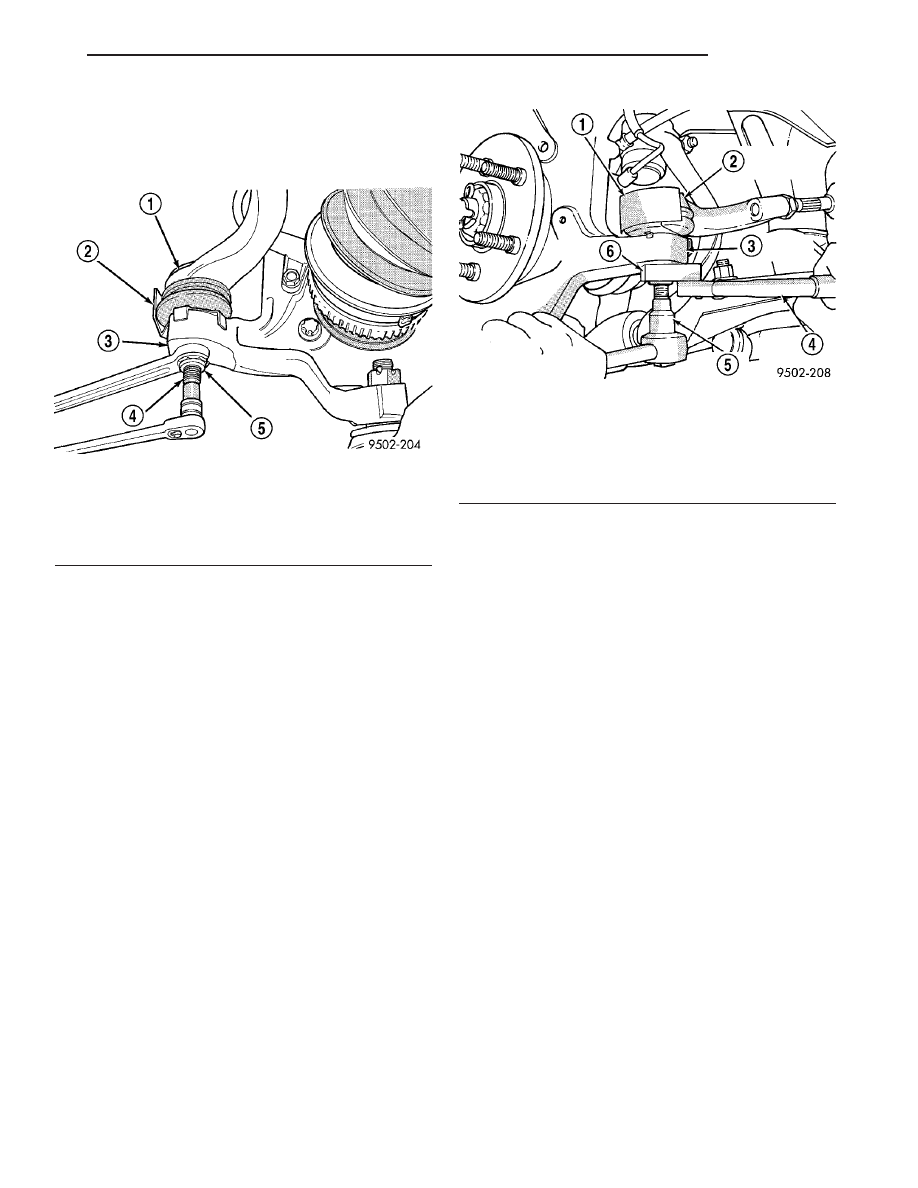Chrysler Sebring, Stratus sedan, Sebring Convertible. Manual - part 557

(4) Remove nut attaching outer tie rod to steering
knuckle (Fig. 18). Nut is removed from tie rod by
holding tie rod stud with a socket while loosen-
ing and removing nut with wrench.
(5) Remove tie rod stud from steering knuckle
using Remover, Special Tool C-3894-A.
(6) Remove outer tie rod from inner tie rod by un-
threading it.
INSTALLATION
(1) Thread outer tie rod onto inner tie rod. Make
sure jam nut is on inner tie rod before install-
ing outer tie rod. Do not tighten jam nut at this
time.
(2) Install tie rod end seal boot heat shield on the
tie rod end (Fig. 18).
(3) Install outer tie rod into steering knuckle.
Start tie rod-to-steering knuckle attaching nut onto
tie rod stud. While holding tie rod stud stationary
using a socket, use a crowfoot on a torque wrench to
tighten tie rod nut to 55 N·m (40 ft. lbs.) torque
(Fig. 19).
CAUTION: During the following step, do not allow
the steering gear boot to become twisted.
(4) Tighten tie rod jam nut (Fig. 17) to 75 N·m (55
ft. lbs.) torque.
(5) Install tire and wheel assembly. Progressively
tighten the wheel nuts in a criss-cross tightening
sequence to 135 N·m (100 ft. lbs.) torque.
(6) Lower vehicle.
(7) Adjust
front
wheel
alignment
toe
setting.
(Refer to 2 - SUSPENSION/WHEEL ALIGNMENT -
STANDARD PROCEDURE)
Fig. 18 Removing Outer Tie Rod Nut
1 - TIE ROD
2 - HEAT SHIELD
3 - STEERING KNUCKLE
4 - TIE ROD STUD
5 - NUT
Fig. 19 Torquing Tie Rod Nut
1 - HEAT SHIELD
2 - OUTER TIE ROD
3 - STEERING KNUCKLE
4 - TORQUE WRENCH
5 - 11/32 SOCKET
6 - CROWFOOT
JR
GEAR
19 - 27
TIE ROD - OUTER (Continued)